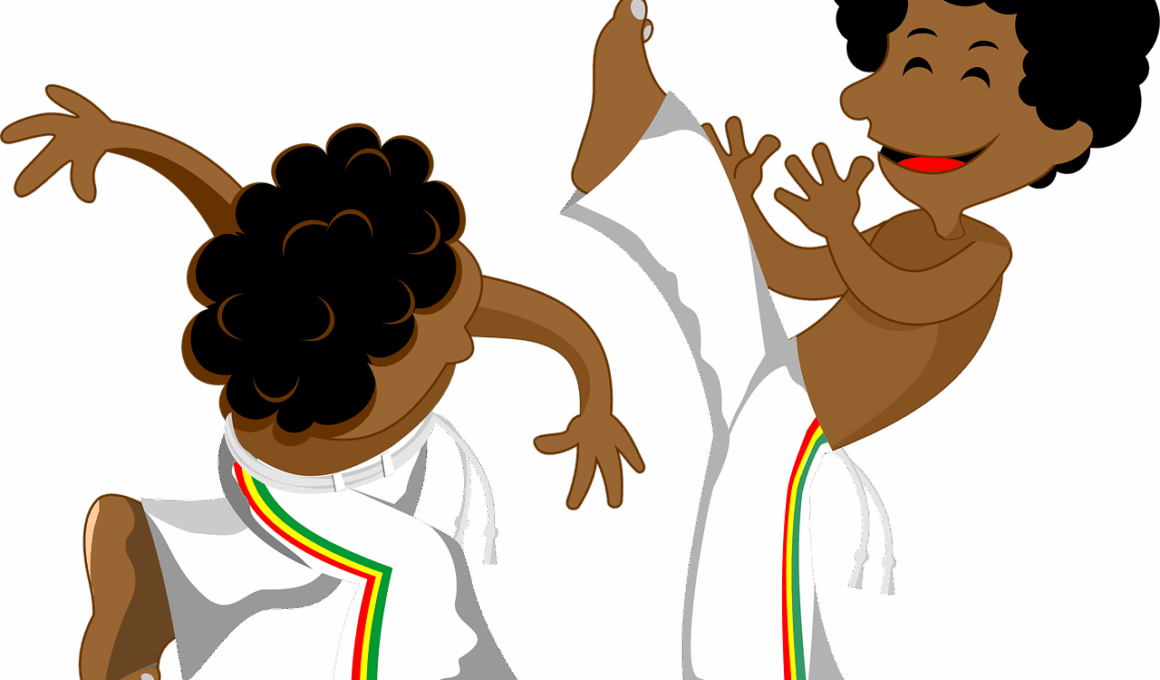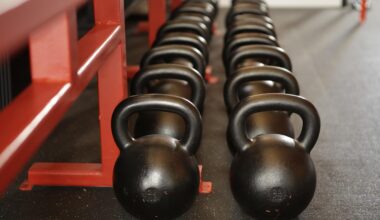Brazilian Jiu-Jitsu vs Capoeira: Comparing Two Unique Brazilian Martial Arts
Brazilian Jiu-Jitsu (BJJ) and Capoeira represent two distinct branches of Brazilian martial arts, each with unique characteristics and philosophies. BJJ focuses predominantly on ground fighting and grappling, emphasizing leverage and technique over brute strength. Developed by the Gracie family in the early 20th century, it arose from traditional Japanese Jujutsu. Practitioners learn various techniques, including joint locks and chokes, mastering the art of submission. Competitions, known as ‘rolling,’ allow students to test their skills against each other. In contrast, Capoeira is a dynamic blend of martial arts, dance, music, and culture, rooted in African traditions brought to Brazil. The movements are fluid and acrobatic, often performed to rhythmic music. Capoeira enables practitioners, called ‘capoeiristas,’ to express themselves through movement while showcasing agility. The art form encourages improvisation and is characterized by its unique kicks, spins, and dodges. BJJ practitioners focus on self-defense and competition, while Capoeira emphasizes cultural expression, making both arts valuable in various contexts. Their rich histories and differing focuses provide diverse benefits to those who choose to train in them.
When comparing Brazilian Jiu-Jitsu and Capoeira, it is essential to consider their training methods and philosophies. BJJ training typically involves both live sparring and drilling of techniques, allowing practitioners to gradually improve their skills. Regular sparring sessions encourage students to apply techniques in real-time situations, helping them understand timing, distance, and leverage. The environment is usually structured and focused, with a strong emphasis on technique and progression through belt ranks. On the other hand, Capoeira classes usually incorporate music, singing, and rhythm in the training process, creating a lively atmosphere. Students learn movement through kata, which are choreographed sequences, and ‘ginga,’ the fundamental movement that forms the base for all techniques. The camaraderie within the Capoeira community promotes creative expression, allowing practitioners to develop their unique style while learning. While BJJ classes often follow a strict curriculum, Capoeira encourages an artistic approach to training, fostering creativity through spontaneous movements in the roda, the circular formation where capoeiristas perform. This vibrant culture creates a unique experience that differs from BJJ’s more technical, competition-driven environment.
Self-Defense Applications
Both Brazilian Jiu-Jitsu and Capoeira offer practical self-defense applications, albeit in contrasting manners. Brazilian Jiu-Jitsu is renowned for its effectiveness in real-life self-defense scenarios. The emphasis on positioning, escapes, and submissions equips students with invaluable skills they can apply when defending themselves from larger attackers. The techniques focus on controlling opponents while minimizing the risk of injury to oneself. BJJ’s effectiveness has been demonstrated in numerous self-defense instances and continues to gain recognition for its real-world applications. Conversely, Capoeira primarily focuses on evasion and fluid movement rather than static self-defense techniques. While not traditionally taught as a self-defense system, it provides practitioners with the agility to dodge attacks and counter with effective strikes. The emphasis on flow and rhythm may allow capoeiristas to outmaneuver opponents, making it an exciting yet unconventional approach to self-defense. However, its effectiveness can vary based on individual skill level and context. While BJJ offers realistic techniques for self-defense, Capoeira inspires confidence through movement, providing diverse options for practitioners seeking self-protection in unexpected confrontations.
In terms of fitness, both Brazilian Jiu-Jitsu and Capoeira offer unique workout benefits, contributing to overall physical health. BJJ sessions involve intense grappling drills and sparring, promoting cardiovascular endurance, flexibility, strength, and mental resilience. The demanding nature of BJJ training increases muscular strength, particularly in the core and legs, leading to improved overall conditioning. BJJ practitioners often report significant weight loss and improved physical fitness levels, as training sessions can be both physically and mentally challenging. On the other hand, Capoeira’s dance-like movements engage cardiovascular fitness while incorporating balance and coordination. The acrobatic nature of Capoeira provides a full-body workout, enhancing agility, flexibility, and endurance. Participants often find themselves laughing and enjoying the playful environment, which contributes to a positive workout experience. Additionally, the communal aspect of Capoeira encourages social interaction, making it easier to stay motivated and engaged in training. While both martial arts demand dedication and effort, their distinctive approaches to fitness and training provide valuable experiences that promote well-rounded physical conditioning.
Cultural Significance and Philosophy
Cultural significance plays a major role in both Brazilian Jiu-Jitsu and Capoeira, enriching the experience for practitioners. BJJ has a strong lineage tied to traditional Japanese martial arts, and its practices are rooted in Brazilian culture. The art has evolved over the years, emphasizing principles of respect, discipline, and continuous self-improvement. BJJ academies often promote a sense of community and camaraderie among students, which fosters personal growth. In contrast, Capoeira is steeped in African and Brazilian heritage, combining dance, music, and martial movements into a single form. The art emerged as a means for enslaved Africans to develop self-defense skills while preserving their culture. Through the celebration of community and cultural identity, Capoeira creates a sense of belonging among its practitioners. Participating in rodas, traditional gatherings of Capoeiristas, allows students to connect with the rich history and culture that underpin the art. Both martial arts provide valuable cultural experiences, allowing practitioners to engage in something beyond physical fitness while deepening their understanding of Brazilian heritage.
For those interested in pursuing either Brazilian Jiu-Jitsu or Capoeira, discovering the right environment and instructor is crucial. Many BJJ academies offer trial classes to help beginners gauge their interest and compatibility with the sport. Finding a supportive instructor who emphasizes technique, safety, and personal growth can significantly enhance the learning experience. Moreover, visiting various schools will allow potential students to analyze different teaching styles, class structures, and community vibes. As for Capoeira, locating a local group or studio with an inclusive atmosphere can create a welcoming environment for newcomers. It can enrich the learning experience by encouraging collaboration between experienced capoeiristas and newcomers. Additionally, exploring the musical aspect of Capoeira, like playing instruments or singing, will further immerse students in the culture. Ultimately, both arts encourage students to connect with their bodies and improve overall well-being. Participants are more likely to succeed in their martial arts journey when they feel motivated and supported by their respective communities.
Conclusion: Choosing Your Path
Ultimately, both Brazilian Jiu-Jitsu and Capoeira provide unique pathways for individuals seeking physical, mental, and cultural development. Each martial art offers distinctive features, emphasizing different aspects of training and self-expression. BJJ excels in self-defense and technical training, making it a popular choice for those focused on practical applications. Capoeira, with its emphasis on movement, rhythm, and community, allows practitioners to express themselves artistically while promoting agility and fitness. Choosing between the two should reflect personal goals, interests, and values. Some individuals may even find value in training both arts, harnessing the strengths of each to create a well-rounded martial arts experience. In essence, engaging in any martial art encourages physical fitness, character development, and community involvement. No matter which path you choose, Brazilian Jiu-Jitsu and Capoeira promise to enrich your life while keeping you engaged in a unique journey of self-discovery and improvement. The key is to remain open to learning and exploration as you delve into the world of Brazilian martial arts.


